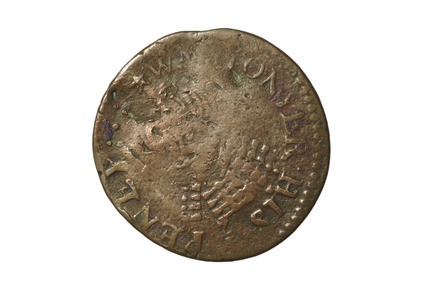Punkmoney and monetary diversity
Post on: 10 Апрель, 2015 No Comment

All kinds of things have been used as money – shells, salt, clay tablets, and to that list we can now add tweets. Using the hashtag punkmoney, Eli Gothill hatched the idea of issuing promisory notes on twitter and exchanging them as a primitive form of e-currency.
To create money, you simply tweet the person your promise, whether that’s for a beer or a book or an hour of your time, including #punkmoney so that it can be tracked. When it is redeemed, a second tweet cancels it. It can also be transferred. You can see how it works on punkmoney.org. or read about it in the latest issue of Stir magazine .
The Bank of England will rest easy if it ever finds out about this, needless to say. If you look it up on twitter, youll find more people like me talking about what a good idea it is than people actually using it. Really, it’s a fun little idea that you might want to use between friends, but its worth mentioning because it demonstrates a couple of good points to remember about money.
First, it’s a reminder that currency is simply an agreed mechanism of exchange, and if you all agree, you can exchange anything you like.
Second, different kinds of money can co-exist alongside each other, and that’s healthy. Like any ecosystem, diversity is good, and it’s practically impossible to create a currency that can do everything see the Eurozone for details. The Euro has been designed to optimise trading in Europe. It does that fine, but it is failing the citizens of individual countries such as Spain or Greece.
For money to work for us, there ought to be different levels for different things, starting with an international reserve currency. There have been various suggestions over the decades and it’s never quite developed, largely because the dollar holds that role at the moment and America likes it that way. But China wants it. and as the next global superpower it’s only a matter of time before they get it.
Beneath that you have large regional currencies such as the Euro, and the mixed results of the Euro should not deter other regions from experimenting here. A trading currency designed at encouraging trade between African countries could be very beneficial, for example. There are discussions underway at the moment to recreate the East African Shilling.
Then come national currencies, which we all know about, and provincial ones. Not everyone would need these smaller regional currencies. Some places would no doubt continue to use the national currency, but if something different would work better, it could be created. You could make a good case for a complementary currency within Wales or the Northeast of England, designed at stimulating small business-led regeneration. A currency for Wales has been proposed and discussed, although I dont know if theres been any progress on Uned Cymru recently.
Beneath provincial currencies comes local money, which already exists in places like Bristol, Stroud, and Brixton. This keeps money circulating within the town, encouraging loyalty to local shops. And if you want to add one further layer, you could even create a household currency with beans or buttons for chores, and use it to teach your children about money.
The key is that each of these serves a particular constituency, and can be designed according to their needs. And no, it wouldn’t be complicated, because most of us do our day to day trading in one place and would only need one or two. (And they could be cashless, so you wouldn’t need two wallets.) Besides, most of us already navigate seamlessly between multiple ways to pay for things – cash, credit cards, Paypal, loyalty card points, airmiles – and don’t seem to get confused.
#Punkmoney may be unlikely to catch on, but diversity in the way we create and use money is here to stay.














